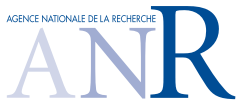Andrea Brini, Montpellier
Pierre-Emmanuel Chaput, Nancy
Alessandro Chiodo, Paris
Tom Coates, London (TBC)
Vasily Golyshev, Moscow
Vassily Gorbounov, Aberdeen
Jérémy Guéré, Paris
Christian Korff, Glasgow
Andrew Kresch, Zurich
Etienne Mann, Montpellier
Clélia Pech, London
Nicolas Perrin, Dusseldorf
Konstanze Rietsch, London
Christian Sevenheck, Mannheim
Catharina Stroppel, Bonn
Dimitri Zvonkine, Paris
